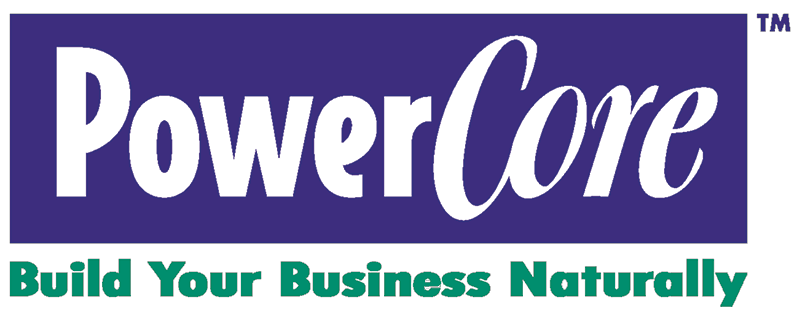What To Say To Get Referrals: What is the line you do not cross?
Transparent means nothing is hidden. Transparent is not always appropriate. That’s why there are hippa regulations. Authentic means something is real. Authentic is always appropriate.
· Share the boundary between transparent and authentic in your business.
What is the line you do not cross.

Response from Wendy Kinney
from the PowerCore Team
I have two examples for PowerCore:
1: One of my responsibilities is signing off on Officer nominees.
The LeadershipCore nominates, then I have to approve the nominations. Frequently there are five, or more, nominees for each Officer role.
When I don't approve I give the Officers a note like: "Not eligible for this role this term." Sometimes the TCO will call me asking why. Then I have to decide whether to be authentic or transparent.
- Authentic would be: "There is a current ongoing issue that precludes their approval for this term."
- Transparent would be: "They never pay their own invoice on time, how can I approve them for MembershipCoOrdinator?"
2: One of the responsibilites of the MembershipCore of each Team is to deal with internal issues. Issues happen -- one definition of conflict is "two people in the same county."!
When a MembershipCore decides to remove a Member for cause it means that person is not ever able to return to a PowerCore Team - as a Sub, as a Visitor, or as a Member.
- Authentic: I have a personal, 1:1 phone conversation with them explaining this, and telling them that if they do, that is their permission for me to be transparent - to let all MembershipCoOrdinators know why their membership was terminated by the MembershipCore. As long as they don't attend a meeting, the reason stays between us.
- Transparent: I share the situation before they've given cause. Everyone makes mistakes. Keeping that private is respectful to the person, and to me. I want people to be comfortable coming to me, knowing our conversation is private.
Internal quality control is essential for every organization. So is respect.
Response from Rebecca Brizi
from the Buckhead Team
We have all met that person who makes it about them: you are sharing what a rough day you had, or a dififcult situation you are in and they say:
"You think that's bad, wait until you hear what happened to me!"
That is the boundary in my work.
My clients do not spend time with me so that I can empathize with their issues, they spend time with me so that we can solve their issues. Knowing how much to share my understanding of their situation without turning our time together into a commiseration is how I maintain that boundary.

Response from Tom Wallace
from the Peachtree City Team
I am open to sharing the financial struggles my wife and I had with both current and potential clients. This shows that I can empathize with them and understand their struggles. It also shows that we came out much better on the other side.
Do I go through all the details, no. That would definitely be too much information and in some ways very private.

Response from Heidi Franz
from the Newnan Team
In my business, the boundary between transparency and authenticity is built on trust. I’m transparent with my clients about their own numbers—what’s working, what’s not, and how we can strengthen their systems—but I’m not transparent about everything I know. Clients share highly confidential financial data with me, and protecting that information is non-negotiable.
Authenticity means I’m honest and real in every interaction. If something isn’t adding up or a process could be improved, I’ll say so clearly and constructively. But transparency stops where confidentiality begins. I never share another client’s details or compare businesses, even as examples.
That’s the balance: I’m authentic in how I communicate, but careful in what I disclose. My clients know they can trust me to tell them the truth while keeping their information safe—and that combination builds lasting credibility.

Response from Lacy Loyd
from the Newnan Team
In my business, the line between transparent and authentic comes down to how much detail is shared about a loss. I stay authentic by explaining what happened, how my team handled it, and how the client felt cared for. But I never share identifying details about the property, the people, or the extent of their damage. That would cross into transparency that isn’t mine to give.
Authentic tells the truth about how I serve. Transparent exposes things that should stay private. My clients trust me because I know the difference.
Response from Andrew Vest
from the Milton Team
In my business, the line between transparency and authenticity is all about purpose and protection.
Being authentic means showing up as real, consistent, and trustworthy with staff, vendors, and guests. It’s being honest about challenges, clear about expectations, and genuine in how we communicate and make decisions. Authenticity builds connection and credibility; it’s always appropriate because it’s rooted in integrity.
Being transparent, however, means opening the curtain, and that’s not always wise or respectful. For example, I’m transparent about policies, goals, and performance expectations, but I’m not transparent about every internal discussion, financial detail, or personnel issue. Sharing too much can compromise privacy, morale, or professionalism, which is why that’s where the line is drawn.
So the boundary is this: I will always be authentic in what I communicate, but not transparent about everything I know. I share what’s relevant, helpful, and respectful, never what could harm trust, violate privacy, or undermine the team’s confidence.

Response from Amber Isaksen
from the Woodstock Team
So my first thought when I read this question was… wait a minute! My whole job is to make sure my clients aren’t hidden! At Proforma Flynn Marketing, we’re in the “get your name out there” business — not the “keep you a secret” business!
But here’s the thing — we believe in being authentic, not just transparent.
Because transparency means nothing’s hidden… but let’s be honest, not everything needs to be shared. Some people take that a little too far!
Authenticity, though — that’s where the magic happens. It’s showing up real, honest, and doing what you say you’ll do. I’ll always be upfront about costs, plans, and ideas — but I keep it professional and respectful.
At the end of the day, people can feel when you’re real. And that’s where the best connections — and the best marketing — really happen.
Because in the end… authentic always wins.
